Come join us now, and enjoy playing your beloved music and browse through great scores of every level and styles!
Can’t find the songbook you’re looking for? Please, email us at: sheetmusiclibrarypdf@gmail.com We’d like to help you!
Table of Contents
What is a Jazz Standard?
A jazz standard is a musical theme that has acquired a certain notoriety in the jazz genre, which is known by many musicians and which has been the subject of numerous versions, interpretations and improvisations, and which is frequently used in jam sessions and performances.
There are standards from all eras of jazz, such as ‘When the Saints Go Marching In’, ‘I Got Rhythm’ or ‘How High the Moon’, ‘Take the ‘A’ Train’ to cite examples of the hot, swing and bop.
Many of the best-known standards were composed for films, or come from the so-called Great American Songbook, and have been incorporated into the genre, such as, for example, ‘Summertime’, by George Gershwin, while, for example, ”Round Midnight’, by Thelonious Monk, has been covered by, among others, Cootie Williams, Dizzy Gillespie, Art Pepper, and Miles Davis.
Best Sheet Music download from our Library.
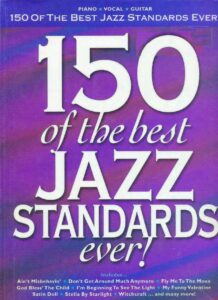
The most recorded standard composed by a jazz musician, and one of the most covered songs of all time, is Duke Ellington’s and Juan Tizol’s “Caravan” with over 500 uses.
Originally, the most recorded jazz standard was W. C. Handy’s “St. Louis Blues” for over 20 years from the 1930s onward, after which Hoagy Carmichael’s “Stardust” replaced it. Following this, the place was held by “Body and Soul” by Johnny Green.
Please, subscribe to our Library.
If you are already a subscriber, please, check our NEW SCORES’ page every month for new sheet music. THANK YOU!
Before 1920
At the beginning of the 20th century, jazz was still considered dance music. The first Dixieland groups remained influenced by this image: King Oliver and his Creole Jazz Band, the New Orleans Rhythm Kings and many other groups included Tin Pan Alley in their repertoires, and record companies sometimes dictated the list of titles that must be recorded by their artists.
Certain imposed songs have thus become standards, such as Darktown Strutters’ Ball or (Back Home Again in) Indiana, recorded by the Original Dixieland Jass Band at Columbia Records in 1917.
Also, among the standards of this era are the songs After You’ve Gone (Turner Layton and Henry Creamer, 1918) and Some of These Days (Sophie Tucker, 1910).
The 1920s
The Jazz Age began in the United States in the 1920s. Jazz became popular there, even though the older generation considered this music immoral and endangering their cultural values.
The first artist who allowed himself to freely choose his titles was Louis Armstrong, who popularized many standards during the years 1920 to 19301. The popular tunes of the 1920s were songs like Sweet Georgia Brown, Dinah or Bye Bye Blackbird.
Some compositions from this era written by jazz musicians have become standards such as Honeysuckle Rose (1928) and Ain’t Misbehavin’ (1929) by Fats Waller. The song Stardust by Hoagy Carmichael and Mitchell Parish is the most recorded jazz standard of the 1920s. Others are written by Broadway composers such as The Man I Love by George and Ira Gershwin (1924), Blue Skies by Irving Berlin (1927), or What Is This Thing Called Love? by Cole Porter (1927).
However, it was not until the 1930s that jazz musicians became comfortable with the complex melodies and sophisticated harmonic grids of Broadway tunes, and used them regularly in their repertoires.
The 1930s
Broadway contributed some of the most popular standards of the 1930s, including the famous Summertime from the comedy Porgy and Bess by George and Ira Gershwin (1935), My Funny Valentine by Richard Rodgers and Lorenz Hart (1937), All the Things You Are by Jerome Kern and Oscar Hammerstein II (1939), and Body and Soul by Johnny Green (1930). These standards are among the most recorded.
The 1930s saw swing establish itself in American music. Duke Ellington and his musicians composed many themes which would become jazz standards: It Don’t Mean a Thing (If It Ain’t Got That Swing) (1932), Sophisticated Lady (1933), Caravan (1936) among the most famous.

The swing era (1935–1946) is that of the greatest big bands, such as those of Benny Goodman and Count Basie, who also participated in the repertoire of jazz standards.
The 1940s
New themes became popular, such as Cotton Tail by Duke Ellington (1940) or Take the ‘A’ Train by Billy Strayhorn (1941). The Second World War was a difficult time for big bands, and small groups developed.
The arrival of bebop brought out a new audience sensitive to sophisticated harmonies, fast tempos, and the virtuosity of the musicians. Their repertoires largely use the standards of the 1930s, but their compositions will also enter the list of standards: Salt Peanuts (1941) and A Night in Tunisia (1942) by Dizzy Gillespie, Anthropology (1946), Yardbird Suite (en) ( 1946), Scrapple from the Apple (1947) by Charlie Parker, or ‘Round Midnight (1944) by Thelonious Monk.
The 1950s and beyond
Some modal jazz recordings became popular in the late 1950s, such as the albums Kind of Blue by Miles Davis in 1959 with the compositions All Blues and So What, Impressions (en) by John Coltrane in 1963, or Maiden Voyage by Herbie Hancock in 1965.
In the mid-1960s, Miles Davis’ second major quintet with Wayne Shorter and Herbie Hancock recorded a series of albums which contained standards such as Footprints (Wayne Shorter, 1966) and Freedom Jazz Dance (Eddie Harris, 1966).
At the end of the 1950s, bossa nova appeared in Brazil, a mixture of samba and jazz, made popular by João Gilberto, Antônio Carlos Jobim and Luiz Bonfá. Gilberto and Stan Getz launched this trend in the United States in 1964 with the famous Getz/Gilberto album. Among the standards of the genre are compositions by Bonfá (Manhã de Carnaval, 1959), Marcos Valle (Summer Samba, 1966), and numerous songs by Jobim such as Desafinado (1959), The Girl from Ipanema (1962), Corcovado (1962).
In the mid-1970s, jazz fusion appeared, which was a mixture of jazz, funk and rock. Joe Zawinul with Weather Report, Chick Corea with Return to Forever, Herbie Hancock with The Headhunters, or John McLaughlin’s Mahavishnu Orchestra considerably broaden the jazz audience, and some of their successes have become standards: Spain (en) by Chick Corea (1971), Chameleon by Hancock (1973), and Birdland by Joe Zawinul (1977).

Jazz standards
Musical compositions that have become jazz standards.
Irving Berlin – Alexander’s Ragtime Band [1911]
“Alexander’s Ragtime Band” is a Tin Pan Alley song by American composer Irving Berlin released in 1911 and is often inaccurately cited as his first global hit. Although not a traditional ragtime song, Berlin’s jaunty melody nonetheless “sold a million copies of sheet music in 1911, then another million in 1912, and continued to sell for years afterward.
It was the number one song from October 1911 through January 1912.” The song might be regarded as a narrative sequel to “Alexander and His Clarinet”, which Berlin wrote with Ted Snyder in 1910. The earlier song is mostly concerned with a reconciliation between an African-American musician named Alexander Adams and his flame Eliza Johnson, but also highlights Alexander’s innovative musical style.
Berlin’s “Alexander’s Ragtime Band” was introduced to the American public by vaudeville comedienne Emma Carus, “one of the great stars of the period.” A popular singer in the 1907 Ziegfeld Follies and Broadway features, Carus was a famous contralto of the vaudeville era, renowned for her “low bass notes and high lung power.”
Carus’ brassy performance of the song at the American Music Hall in Chicago on April 18, 1911, proved to be well-received, and she toured other metropolises such as Detroit and New York City with acclaimed performances that featured the catchy song. The song as comically recorded by American singing duo Arthur Collins and Byron G. Harlan became the number one hit of 1911.
Nearly two decades later, jazz singer Bessie Smith recorded a 1927 cover, which became one of the hit songs of that year. The song’s popularity re-surged in the 1930s with the release of a 1934 close harmony cover by the Boswell Sisters, and a 1938 musical film of the same name starring Tyrone Power and Alice Faye. The song was covered by a variety of artists such as Al Jolson, Billy Murray, Louis Armstrong, Bing Crosby, and others. Within fifty years of its release, the song had at least a dozen hit covers.
Etta James – Stormy Weather
From the album is At Last.
Search in our Library by author, or song name.
| Artist or Composer / Score name | Cover | List of Contents |
|---|---|---|
| Mozart Allegro In D Major K626b16 (Musescore File).mscz | ||
| Mozart Andante – From Piano Concerto No 21 – Arr piano solo | MozArt Andante – From Piano Concerto No 21 – Arr (Sheet Music) | |
| Mozart Ave Verum Corpus (arr. piano solo by Lizt) | Ave Verum Corpus Mozart | |
| Mozart Clarinet Concerto 2nd Movt. Easy Piano | Mozart Clarinet Concerto 2nd Movt. Easy Piano | |
| Mozart Clarinet Concerto Allegro[1] (Musescore File).mscz | ||
| Mozart Clarinet Concerto In A K622 (4 hands piano arr.) |
 |
|
| Mozart Clarinet Concerto In A K622 (Adagio) arr. for piano solo |
 |
|
| Mozart Clarinet Concerto In A K622 (Adagio) arr. for piano solo V2 |
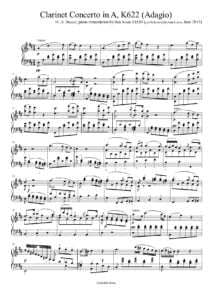 |
|
| Mozart Cosi Fan Tutte Overture 2 Guitars (Musescore File).mscz | ||
| Mozart Die Zauberflöte transcription 4 hands | ||
| Mozart Die Zauberflöte K 620 arr. piano solo |
 |
|
| Mozart Fantasie Piano KV 475 | Mozart Fantasie KV 475 | |
| Mozart Fingerpicking Guitar 15 songs arr. for Guitar Solo in Standard Notation and Tablature |
 |
Mozart Fingerpicking Guitar Solo with TABs |
| Mozart for Classical Guitar |
 |
Mozart guitar |
| Mozart For Guitar |
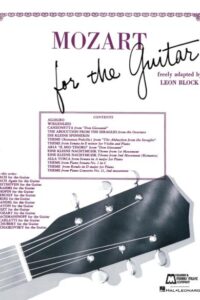 |
Mozart For Guitar |
| Mozart For Guitar 32 Transcriptions For Guitar |
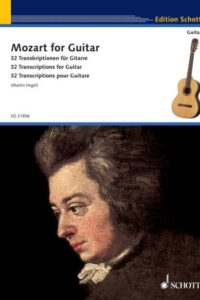 |
Mozart For Guitar 32 Transcriptions For Guitar |
| Mozart Gold Easy Piano (The easy Piano Collection) |
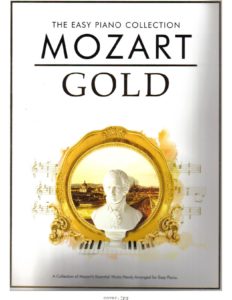 |
Mozart Gold Easy Piano (The easy Piano Collection) |
| Mozart His Life And Work Master Musicians Series (eBook) Biography |
 |
|
| Mozart KV 448 Piano Sonata D Major 2 pianos | Mozart Sonata KV 448 2p | |
| Mozart KV 576 Piano Sonata 19 | Mozart Sonata 576 | |
| Mozart Lacrimosa Requiem In D Minor (Musescore File).mscz | ||
| Mozart Piano Concerto No 21 K467 2nd Mvmt (Arr For 2 Pianos) (Musescore File).mscz | ||
| Mozart Piano Concerto No 21 K467 (piano solo Ed. Reinecke) |
 |
|
| Mozart Piano Concerto No 23 in A major K488 Piano solo arr. by Carl Reinecke |
 |
|
| Mozart Piano sonata 13 KV 333 | MozArt sonata 13 KV 333 | |
| Mozart Piano Sonata No 11 in A – Major, K.331 (300i) | Mozart Sonata 9 K331 | |
| Mozart Piano Sonata no. 10 KV 330 | Mozart Sonata KV 330 | |
| Mozart Piano Sonata no. XI KV 309 | Mozart Sonata 309 | |
| Mozart Piano Sonata VI K. 284 |
 |
|
| Mozart Piano Sonata XIX KV 282 | Mozart KV 282 | |
| Mozart Piano Sonatas vol 2 (Mozarteum Edition) |
 |
MozArt Piano Sonatas vol 2 |
| Mozart Piano Sonatas vol. 1 (Mozarteum Edition) |
 |
MozArt Piano Sonatas vol 1 |
| Mozart Piano Trio KV 548 (arr. for 4 hands piano) | ||
| Mozart Requiem Two Transcriptions for piano solo by F. Litszt (Confutatis & Lacrymosa) |
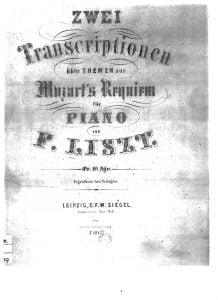 |
|
| Mozart Rondo Alla Turca K 331 300i fingered.mscz | ||
| Mozart Rondo K. 494 |
 |
|
| Mozart Selected Variations Piano |
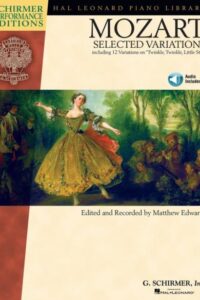 |
Mozart Selected Variations Piano |
| Mozart Sonata Piano K. 280 (ed. Sant-Saens) |
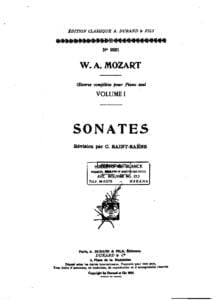 |
|
| Mozart Symphony No. 40 In G Minor III Menuetto Allegretto Piano Solo.mscz | ||
| Mozart Symphony No. 40 In G Minor IV Piano Solo.mscz | ||
| Mozart Symphony No. 40 KV 550 1st Movt. Piano Solo arr.mscz | ||
| Mozart Symphony No.40 In G Minor K.550 II Andante.mscz | ||
| Mozart The Magic Flute Papagenos Aria (Guitar arr.) | Mozart The Magic Flute Papagenos Aria (Guitar arr.) | |
| Mozart The Magic Flute Papagenos Aria (Guitar Arr.) (Musescore File).mscz | ||
| Mozart The Young Mozart Easy Original Pieces For Piano Written By Mozart At The Age Of Six And Eight Years |
 |
|
| Mozart Theme from Elvira Madigan KV 467 Piano Solo | Mozart Theme from Elvira Madigan KV 467 Piano Solo | |
| Mozart Theme From Symphony 40 Easy Piano Arr. By Free Musickey |
 |
|
| Mozart Variationen fuer Pianoforte solo Ed. Peters Ah Vous direz je maman |
 |
|
| Mozart Variations K265 “Ah! Vous-dirai-je, maman, | Mozart Variations K265 | |
| Mozart-Czerny Requiem piano 4 hands | Mozart-Czerny Requiem piano 4 hands | |
| Mozart! The Musical Of Michael Kunze And Sylvester Levay Piano Score |
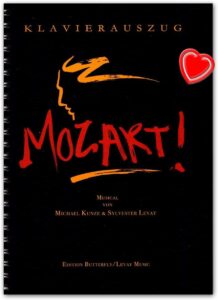 |
Mozart! The Musical Of Michael Kunze And Sylvester Levay Piano Score |
| Mr. Curiosity (Jason Mraz) | ||
| Mr.hollands Opus – Visions Of A Sunset | ||
| Mreyte Ya Mreyte (Caramel OST) Racha Rizk | ||
| Mu Dv Ay Ne L.D. 50 Authentic Guitar Tab |
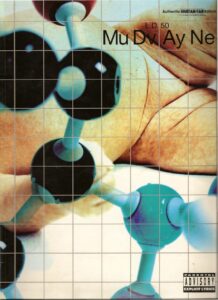 |
Mu Dv Ay Ne L.D. 50 Authentic Guitar Tab |
| Muddy Waters – Deep Blues (Guitar TAB) |
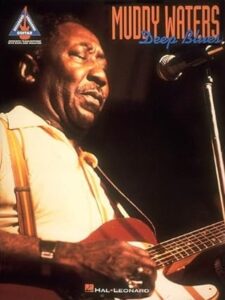 |
Muddy Waters – Deep Blues |
| Muddy Waters Rollin’ Stone Guitar Tabs |
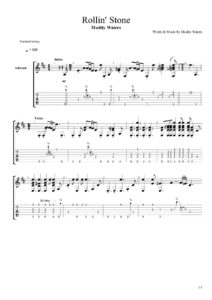 |
|
| Mulgrew Miller – Wingspan lead sheet transcription |
 |
|
| Mulgrew Miller Songbook | Mulgrew Miller Songbook | |
| Mulligan, Gerry Anything Goes (tenor solo) |
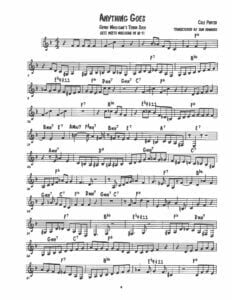 |
|
| Muppet Treasure Island – Songbook Selections (Piano-Vocal-Guitar) |
 |
|
| Murakami, Haruki – Musica, sólo música Book (Español – Spanish) |
 |
|
| Murakami, Hauriki Absolutely On Music – Seiji Ozawa (book) |
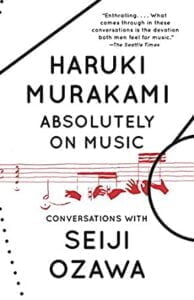 |
|
| Murder she said (Ron Goodwin) | ||
| Murder she wrote (La Signora in Giallo) | ||
| Muse Exogenesis Symphony Part 3 (Redemption) |
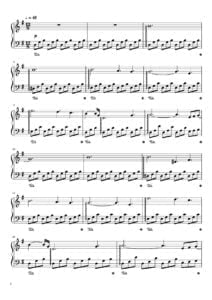 |
|
| Muse Exogenesis Symphony Part 3 (Redemption) (Musescore File).mscz | ||
| Muse – Bliss | Muse-Bliss 1st page | |
| Muse – Butterflies And Hurricanes | ||
| Muse – Feeling Good | ||
| Muse – In Your World | ||
| MUSE – Neutron Star Collision (Love is Forever) Piano – Vocal – Guitar |
 |
|
| Muse – New Born | Muse – New Born | |
| Muse – Origin Of Symmetry Guitar Tab Book |
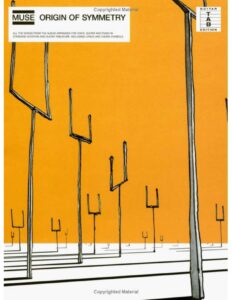 |
Muse Origin |
| Muse – Resistance (Musescore File).mscz | ||
| Muse – Simulation Theory Album Sheet Music arranged for piano |
 |
Muse – Simulation Theory Album Sheet Music arranged for piano |
| Muse – Sing For Absolution (guitar) | Muse Sing For Absolution (gtr) | |
| MUSE – The 2nd Law Songbook |
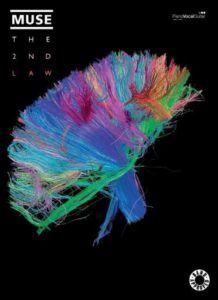 |
MUSE – The 2nd Law Songbook |
| Muse – The Piano Songbook |
 |
Muse – The Piano Songbook |
| Muse Black Holes And Revelations |
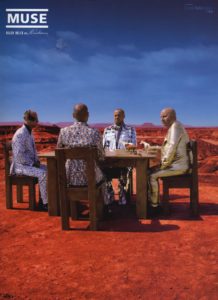 |
Muse Black Holes And Revelations |
| Muse Exogenesis Symphony | Muse Exogenesis Symphony | |
| Muse Hullabaloo Soundtrack Guitar Tab Book |
 |
Muse Hullabaloo Soundtrack Guitar Tab Book |
| Muse Play Piano With Muse |
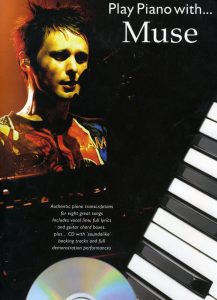 |
Muse play piano with |
| Muse Showbiz (Guitar) with Tablature |
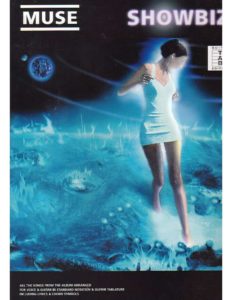 |
Muse Showbiz (Guitar) |
| Muse Songbook Absolution |
 |
Absolution |
| Muse The Piano Songbook |
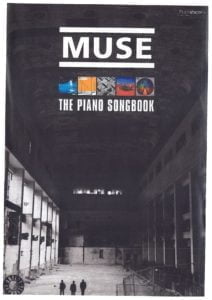 |
Muse The Piano Songbook |
| Muse The Resistance |
 |
Muse The Resistance |
| Music After The Fall Modern Composition And Culture Since 1989 (Book) by Tim Rutherford-Johnson |
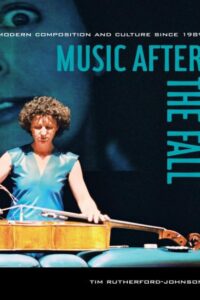 |
|
| Music Analysis In The Nineteenth Century (1994) Book |
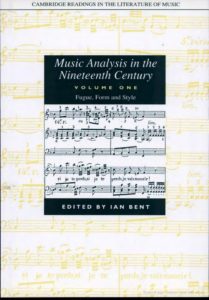 |
|
| Music And Color Therapy Book |
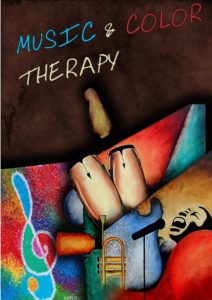 |
|
| Music and Mathematics From Pythagoras to Fractals – Oxford University Press (illustrated) |
 |
|
| Music And Memory by Bob Snyder (Book) |
 |
|
| Music And Sentiment (Charles Rosen) Book |
 |
|
| Music And The Emotions Book |
 |
|
| Music Artistry And Education A Journey Towards Musical Growth And Enlightenment (Book) by Milton Allen |
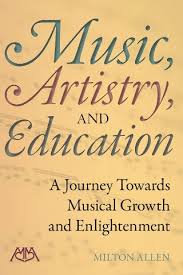 |
|
| Music as a Mirror of History Course Guidebook (Prof. Robert Greenberg) The Great Courses (Book) |
 |
|
| Music Composition For Dummies (eBook) |
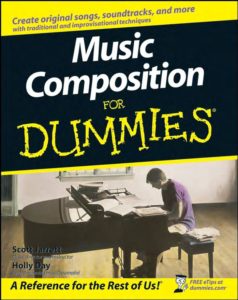 |
|
| Music for Children – Becky Rumens-Syratt |
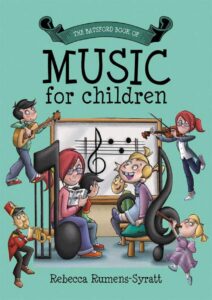 |
Music for Children – Becky Rumens-Syratt |
| Music For Sight Singing – R.W. Ottman & Nacy Rogers (8th Ed.) Book |
 |
|
| Music For The Common Man Aaron Copland by Elizabeth B. Crist |
 |
|
| Music From The Movies The Action Collection (solo piano) |
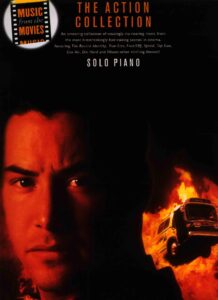 |
Music from the movies |
| Music from the movies – The film Noir Collection (Solo piano) |
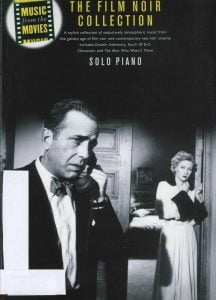 |
Music from the movies – The film Noir Collection (Solo piano) |
| Music History – Ted Gioia History Of Jazz, The (1998) Book |
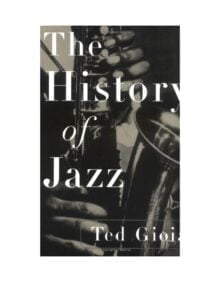 |
|
| Music In The Twentieth Century David Metzer Musical Modernism At The Turn Of The Twenty First Century Cambridge University Press 2009 |
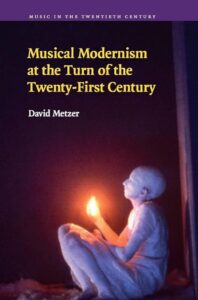 |
|
| Music in Theory and Practice by Bruce Benward and Marilyn Saker |
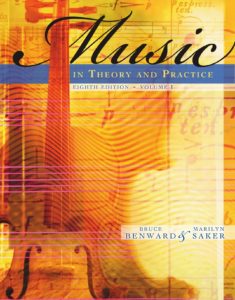 |
|
| Music Musique – French And American Piano Composition in the Jazz Age by Barbara Meister (Book) |
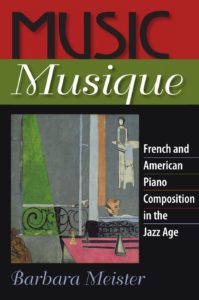 |
|
| MUSIC NOTATION PREPARING SCORES AND PARTS (Berklee Guide) |
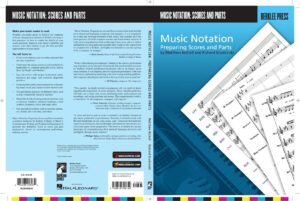 |
Music Notation Preparing Scores and Parts (Berklee Guide) |
| Music Notations Theory Book |
 |
|
| Music Of The Twentieth Century An Anthology by Bryan R. Simms |
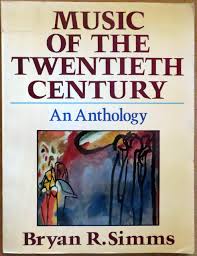 |
|
| Music Theory – Complete Guide To Film Scoring (Berklee) |
 |
Music Theory – Complete Guide |
| Music Theory 101 From keys and scales to rhythm and melody, an essential primer on the basics of music theory Brian Boone and Marc Schonbfun |
 |
|
| Music Theory Book – Hiroaki Honshuku – Jazz Theory 1 & 2 | Theory I | |
| Music Theory For Dummies |
 |
|
| Music Theory For Guitar – An introduction to the essentials by Michael P. Wolfsohn |
 |
Music Theory For Guitar – An introduction to the essentials |
| Music Theory For Guitar by Michael P. Wolfsohn Guitar Techniques |
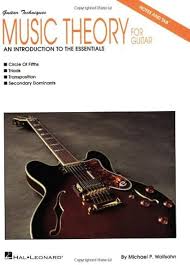 |
|
| Music Theory In Practice, Grade 3 (ABRSM Eric Taylor) |
 |
|
| Music Theory In Practice, Grade 4 (ABRSM Eric Taylor) |
 |
|
| Music Theory In Practice, Grade 5 (ABRSM Eric Taylor) |
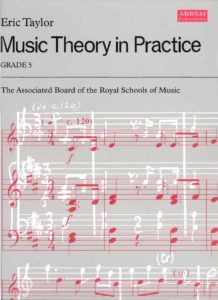 |
|
| Music Theory In Practice, Grade 6 (ABRSM Eric Taylor) |
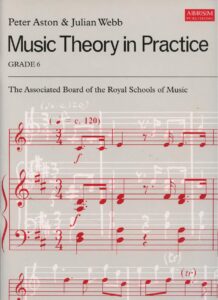 |
|
| Music Theory In Practice, Grade 7 (ABRSM Eric Taylor) |
 |
|
| Music Theory In Practice, Grade 8 (ABRSM Eric Taylor) |
 |
|
| Music Theory, All About – A Fun And Simple Guide To Understanding Music By Mark Harrison |
 |
Music Theory, All About – A Fun And Simple Guide To Understanding Music By Mark Harrison |
| Musica che resta (Il Volo) | ||
| Música Latinoamericana Para Guitarra: El condor pasa |
 |
|
| Musica Mexicana Para Guitarra Volumen Guitar TAB | Musica Mexicana Para Guitarra Guitar | |
| Música Para Todos – Recursos humanos para músicos (Español-Spanish) Book |
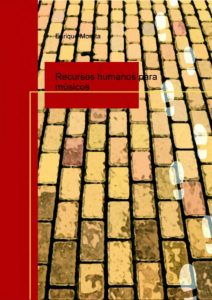 |
|
| Musical Instruments A Ladybird Book Of (1970) By De Ann Rees (Author), Robert Ayton (Illustrator) Book |
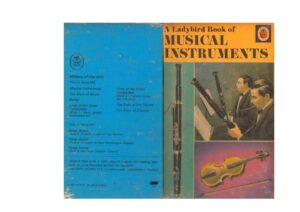 |
|
| Musicals, The – Complete Keyboard Player Musicals |
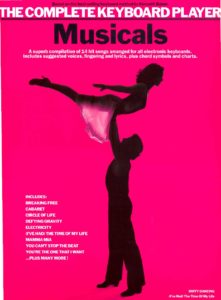 |
Musicals – Complete Keyboard Player Musicals, The |
| Musicians Institute – Harmony & Theory by Keith Wyatt & Carl Schroeder |
 |
|
| Musicians Institute Guitar Licktionary (eBook) |
 |
|
| Mussorgsky Pictures at an exhibition (Piano Solo arr.) | Mussorgsky Pictures at an exhibition (Piano Solo arr.) | |
| My Chemical Romance – Cancer | ||
| My Chemical Romance – Disenchanted | ||
| My Chemical Romance – Helena | ||
| My Chemical Romance – Im Not Okay | ||
| My Chemical Romance – Teenagers | ||
| My Chemical Romance – The Sharpest Lives | ||
| My Edward and I – Jane Eyre OST (Dario Marianelli) | ||
| My Fair Lady Easy Piano Broadway SongBook |
 |
My Fair Lady Easy Piano Broadway SongBook |
| My Favorite Things (Jazz Standard) Guitar Tablature TABs |
 |
|
| My Favorite Things (Musescore File).mscz | ||
| My Favorite Things (performed by Yohan Kim) |
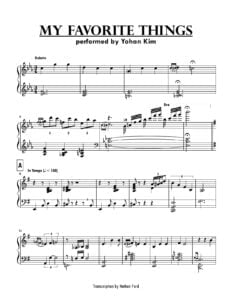 |
|
| My first Schubert – Mi Primer Schubert Easy Piano |
 |
My first Schubert -Mi Primer Schubert Easy Piano |
| My Foolish Heart – As Played By Bill Evans (Musescore File).mscz | ||
| My Funny Valentine – Jazz Standard Lead Sheet Music (Musescore File).mscz | ||
| My heart will go on (Celine Dion) | ||
| My Ideal Richard A. Whiting And Newell Chase Leo Robin In The Film “playboy Of Paris”, 1930 Jazz Standard (Vintage sheet music) |
 |
|
| My Immortal (Evanescence) | ||
| My love is like a red red rose (2 diff. versions by Arthur Foote and Bill Douglas) Piano & voice | My love is like a red, red rose (2) | |
| My New Philosophy by Andrew Lippa from You’re good man, Charlie Brown | My New Philosophy by Andrew Lippa from You’re good man, Charlie Brown |
